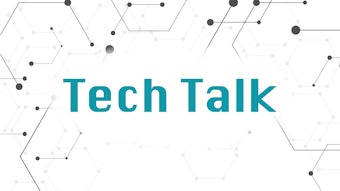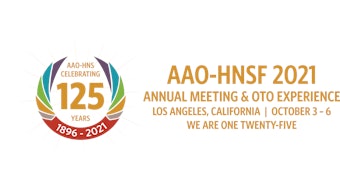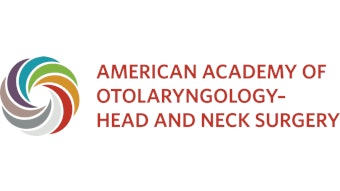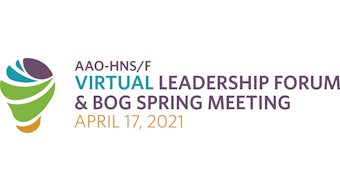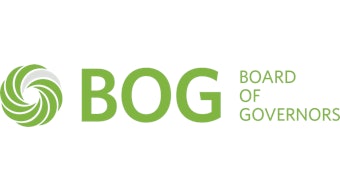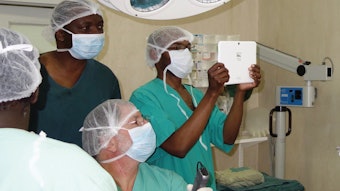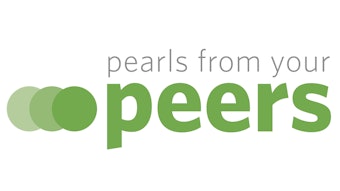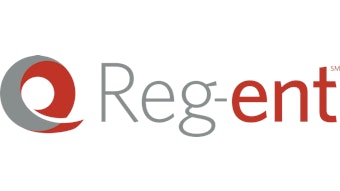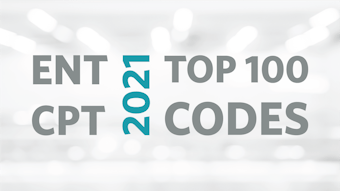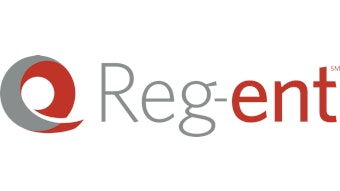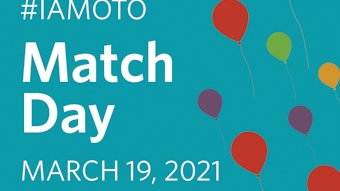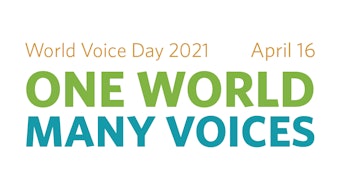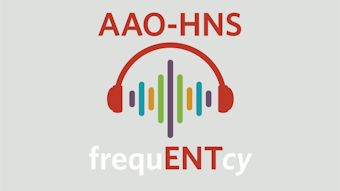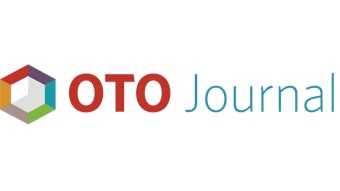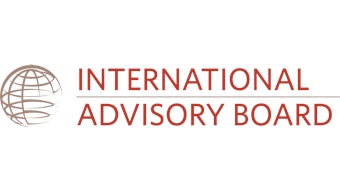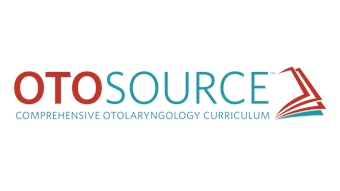Out of Committee: Outcomes Research and Evidence-Based Medicine | Absorbable Steroid-Eluting Sinus Implants: What We Do and Don’t Know
In this segment, our committee shares highlights from the growing amount of key literature on these implants.
Elisabeth Ference, MD, MPH; Daniel C. O’Brien, MD; Prayag S. Patel, MD; George A. Scangas, MD; and Victoria S. Lee, MD
Absorbable steroid-eluting sinus implants provide targeted corticosteroid release over a sustained period of time and were designed to serve as mechanical spacers to prevent both undesirable scar formation as a result of middle turbinate lateralization as well as sinus ostia restenosis. In patients with recurrent chronic rhinosinusitis with nasal polyps (CRSwNP) who have had endoscopic sinus surgery (ESS), they offer an alternative to systemic corticosteroids, which have a side effect profile that precludes consistent long-term use, and topical corticosteroids, which rely on patient compliance.1,2 In this Bulletin segment, our committee shares highlights from the growing amount of key literature on these implants.
For the Ethmoid Sinus: SINUVA and Propel
The SINUVA sinus implant is U.S. Food and Drug Administration (FDA) approved for patients with recurrent CRSwNP and marketed for those who have had prior ethmoid ESS. It was originally intended as an alternative to revision ESS and thus can be placed in the clinic setting. It contains 1350 mcg of mometasone furoate released over 90 days.3 The RESOLVE study was a randomized, sham-controlled, single-blinded (patient only) trial evaluating the efficacy and safety of SINUVA.4 In this study, 100 patients refractory to medical therapy and considered candidates for revision ESS were randomized to bilateral implant placement or a sham procedure. At three months, treated patients experienced significant improvement in polyp grade and ethmoid obstruction on endoscopic grading, and 53% of treated patients versus 23% of controls were no longer considered candidates for revision. A follow-up study with six-month data on the same population found that treated patients had improvement in self-reported Nasal Obstruction Symptom Evaluation (NOSE) score as well as endoscopically evaluated polyp grade and ethmoid obstruction compared with patients who underwent a sham procedure.5 Endoscopic polyp grade and ethmoid obstruction scoring were confirmed by an independent panel of three sinus surgeons blinded to treatment assignments. Subsequently, a randomized, sham-controlled, double-blinded trial was performed.6 In this study, 300 adults with refractory CRSwNP who were candidates for revision ESS were randomized and underwent in-office bilateral placement of SINUVA implants or a sham procedure. At the end of 90 days, patients receiving implants demonstrated significant reductions in both nasal obstruction/congestion score and bilateral polyp grade compared with the sham group. The implant group was also less likely to be indicated for revision ESS, had greater decrease in percentage ethmoid obstruction, and experienced sustained improvement in nasal obstruction/congestion and sense of smell.
The PROPEL implant is also FDA approved for patients with CRSwNP and intended to be placed into the ethmoid cavity at or around the time of ethmoid ESS to maintain patency through its spring-like action, which holds the middle turbinate in a medial position. The implant continuously releases a low dose, 370 mcg, of mometasone furoate over 30 days.3 The efficacy and safety of the implant has been studied in two prospective double-blinded randomized controlled trials. The first of these studies was a multicenter randomized controlled trial of the PROPEL implant compared to a placebo implant made of a similar polyactide-co-glycolide stent without mometasone furoate.7 This study recruited 43 patients over four sites and had the patient and the provider blinded to which stent was placed via block randomization. The patients were then graded by the surgeon at 7, 14, 21, 30, 45, and 60 days postoperatively. All patients were placed on a 14-day course of amoxicillin with clavulanic acid the day prior to surgery; otherwise, no additional steroids, including nasal steroids, could be offered to the study patients for the first month following surgery. The authors found significant improvement in polypoid change and adhesions of the steroid stent compared with the control, without significant difference in the incidence of lateralization of the middle turbinate. One year later a subsequent randomized controlled trial recruited 105 patients over 11 centers and compared the PROPEL stent with a biosimilar control.8 Randomization for this study was by operative cavity, with one side receiving the steroid eluting stent and the opposite receiving the control during bilateral surgery. Similar time points were used, with the addition of a 90-day check, and similar requirements of antibiotics and restrictions on additional steroids for the first 30 days. Different from the first study, which had the operating surgeon performing the assessment, at the 30th day, endoscopic videos of the ethmoid cavities were recorded and forwarded to a panel of three independent evaluators who assessed the degree of polypoid change, scar formation, and degree of middle turbinate lateralization. The authors found significant improvement in the requirement for postoperative intervention, polyp recurrence, and development of adhesions between the steroid eluting arm and the control. There was no difference between the experimental and control groups regarding turbinate lateralization, posterior cataract formation, or measured intraocular pressure changes.
For the Frontal Sinus: PROPEL Mini and Contour
Newer members of the PROPEL family are the Mini, intended for use in the ethmoid and frontal sinuses, and the Contour, intended for use in the maxillary and frontal sinuses, differing from the original implant in delivery system design. Like the original implant, the Mini and Contour contain 370 mcg of mometasone released over 30 days and are designed for insertion at or around the time of ESS.3 Much of the literature has focused on the Mini and Contour relative to the frontal sinus.
The efficacy of the PROPEL Mini implant placement in the frontal sinus opening has been assessed in a prospective, randomized, blinded trial using an intrapatient control design.9 In this study, 80 adult patients with CRS who previously underwent successful bilateral frontal sinusotomy were randomized to receive the implant in one frontal sinus opening while the contralateral side received no implant. At the end of 30 days, an independent reviewer determined that the implant side showed a significant relative reduction of 38.1% in the need for postoperative interventions. Additionally, reductions in the need for postoperative and oral steroid interventions, mucosal adhesions/scarring, polypoid edema, and restenosis rate were also reported.
The efficacy and safety of the PROPEL Contour has also been evaluated in a prospective double-blind randomized controlled trial.10 In this intrapatient-controlled, multicenter study, 80 patients from 12 academic and private practice centers received bilateral frontal sinusotomies followed by unilateral and random placement of the steroid-releasing sinus implant. The primary outcome of the study was the reduction in need for postoperative interventions (defined as surgical intervention or oral steroid trial) at 30 days. The data showed that, based on video endoscopic evaluation by an independent, blinded reviewer, steroid-releasing implants significantly reduced the need for postoperative interventions to 11.5% compared with 32.8% by surgery alone. The proportion of medical to surgical postoperative interventions and whether or not oral steroids would have resulted in adequate patency of the frontal recess were not assessed or reported. Furthermore, the intrapatient control study design precluded evaluation of patient reported outcomes, crucial for the assessment of successful surgical outcomes. A metanalysis of these two studies found that at 30 days the steroid-releasing sinus implant reduced the need for postoperative surgical interventions by 51.2% and for postoperative oral steroid interventions by 37.2%. A subgroup analysis showed improved outcomes of frontal sinus surgery for the implant group through 90 days, irrespective of asthma status, previous endoscopic sinus surgery, extent of surgery, extent of polyps, or Lund‐Mackay computed tomography stage. The impact of reducing the restenosis/occlusion rate on patient reported outcomes could not be assessed.11
Conclusions
The currently available literature, although largely funded by the device companies themselves, has demonstrated consistently at a high evidence level that absorbable steroid-eluting sinus implants can be beneficial, particularly in the frontal sinus, which has more limited penetration via conventional topical sprays and rinses and a tendency towards unfavorable scarring. These implants, however, not only carry a substantial cost, but also have an unknown impact on long-term, patient-reported quality of life. Thus, the main question at this point is which patients stand to benefit enough that their outcome improvement outweighs the associated cost?12,13 The patient characteristics and methodological details of existing studies are quite heterogeneous, varying for example in disease severity, extent of surgical dissection, and perioperative medical therapy, making it difficult to identify cases where implants have the greatest benefit. There is a general consensus that these implants have little utility in routine CRS cases with low likelihood of recurrence or scar formation. Patients with poor compliance, more severe disease phenotype (e.g., aspirin-exacerbated respiratory disease), or relative contraindications to oral steroids (e.g., diabetes) may have more favorable risk/cost-benefit profiles, but more research is needed. The impact on patient-reported outcomes in these contexts and the role of these implants in the wake of newer therapies, such as biologics also need to be investigated. For the time being, clinicians should carefully consider these treatment options on a case-by-case basis, taking into account each patient’s unique characteristics and practicing shared decision-making.
References
1. Han JK, Kern RC. Topical therapies for management of chronic rhinosinusitis: steroid implants. Int Forum Allergy Rhinol. 2019;9(S1):S22-S26. doi: 10.1002/alr.22344.
2. Smith KA, Kingdom TT, Gray ST, Poetker DM, Orlandi RR. Drug-eluting implants in chronic rhinosinusitis: an evidence-based review with recommendations. Int Forum Allergy Rhinol. 2020;10(7):856-870. doi: 10.1002/alr.22565.
3. Intersect ENT. https://www.intersectent.com. Updated 2020.
4. Han JK, Forwith KD, Smith TL, et al. RESOLVE: A randomized, controlled, blinded study of bioabsorbable steroid-eluting sinus implants for in-office treatment of recurrent sinonasal polyposis. Int Forum Allergy Rhinol. 2014;4(11):861-870. doi: 10.1002/alr.21426.
5. Forwith KD, Han JK, Stolovitzky JP, et al. RESOLVE: Bioabsorbable steroid-eluting sinus implants for in-office treatment of recurrent sinonasal polyposis after sinus surgery: 6-month outcomes from a randomized, controlled, blinded study. Int Forum Allergy Rhinol. 2016;6(6):573-581. doi: 10.1002/alr.21741.
6. Kern RC, Stolovitzky JP, Silvers SL, et al. A phase 3 trial of mometasone furoate sinus implants for chronic sinusitis with recurrent nasal polyps. Int Forum Allergy Rhinol. 2018;8(4):471-481. doi: 10.1002/alr.22084.
7. Murr AH, Smith TL, Hwang PH, et al. Safety and efficacy of a novel bioabsorbable, steroid-eluting sinus stent. Int Forum Allergy Rhinol. 2011;1(1):23-32. doi: 10.1002/alr.20020.
8. Marple BF, Smith TL, Han JK, et al. Advance II: A prospective, randomized study assessing safety and efficacy of bioabsorbable steroid-releasing sinus implants. Otolaryngol Head Neck Surg. 2012;146(6):1004-1011. doi: 10.1177/0194599811435968.
9. Smith TL, Singh A, Luong A, et al. Randomized controlled trial of a bioabsorbable steroid-releasing implant in the frontal sinus opening. Laryngoscope. 2016;126(12):2659-2664. doi: 10.1002/lary.26140.
10. Luong A, Ow RA, Singh A, et al. Safety and effectiveness of a bioabsorbable steroid-releasing implant for the paranasal sinus ostia: a randomized clinical trial. JAMA Otolaryngol Head Neck Surg. 2018;144(1):28-35. doi: 10.1001/jamaoto.2017.1859.
11. Singh A, Luong AU, Fong KJ, et al. Bioabsorbable steroid-releasing implants in the frontal sinus ostia: a pooled analysis. Int Forum Allergy Rhinol. 2019;9(2):131-139. doi: 10.1002/alr.22238.
12. Rudmik L, Smith TL. Economic evaluation of a steroid-eluting sinus implant following endoscopic sinus surgery for chronic rhinosinusitis. Otolaryngol Head Neck Surg. 2014;151(2):359-366. doi: 10.1177/0194599814533779.
13. Rizzo JA, Rudmik L, Mallow PJ, Palli SR. Budget impact analysis of bioabsorbable drug-eluting sinus implants following endoscopic sinus surgery. J Med Econ. 2016;19(9):829-835. doi: 10.1080/13696998.2016.1176577.

